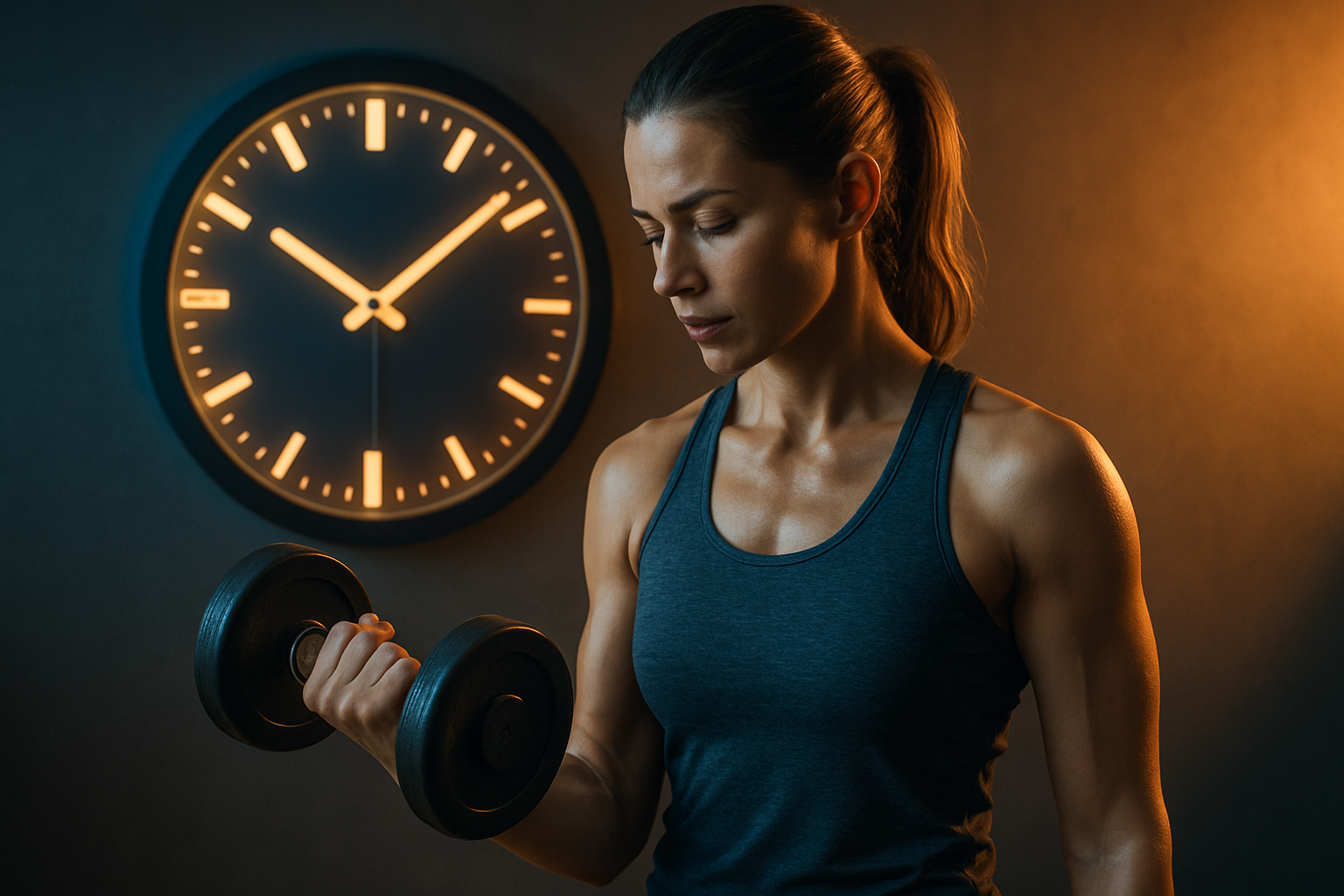Circadian Fitness: Syncing Exercise with Your Body Clock
The rhythm of life pulses through every cell in our bodies, orchestrating a symphony of biological processes. But what if we could harness this internal tempo to revolutionize our fitness routines? Welcome to the world of circadian fitness, where timing is everything. Can aligning your workouts with your body's natural cycles unlock unprecedented gains in performance and well-being?

Recent research in chronobiology has revealed that our muscles, cardiovascular system, and metabolism are all subject to circadian fluctuations. This means that the effectiveness of our workouts can vary dramatically depending on the time of day we choose to exercise. By understanding and leveraging these natural rhythms, we can potentially optimize our fitness regimens for maximum impact.
The Science Behind Circadian Fitness
Circadian fitness is rooted in the concept of chronotype – our body’s natural preference for sleeping and waking. While some people are early birds, others are night owls, and many fall somewhere in between. These preferences are largely determined by genetics and can significantly influence our peak performance times.
Studies have shown that muscle strength, flexibility, and endurance all follow distinct circadian patterns. For instance, muscle strength tends to peak in the late afternoon, while flexibility is often greatest in the early evening. Cardiovascular efficiency, on the other hand, reaches its zenith in the late morning to early afternoon.
Moreover, hormones crucial for exercise performance, such as testosterone and cortisol, follow their own daily rhythms. Testosterone, which aids in muscle building and recovery, is typically highest in the morning, while cortisol, the stress hormone, peaks shortly after waking and gradually declines throughout the day.
Tailoring Your Workout to Your Body Clock
Understanding your personal chronotype is the first step in implementing circadian fitness. Are you most alert and energetic in the morning, or do you hit your stride later in the day? Once you’ve identified your natural rhythm, you can begin to structure your workouts accordingly.
For early birds, high-intensity interval training (HIIT) or strength training in the morning can capitalize on elevated testosterone levels and mental alertness. Mid-morning to early afternoon is ideal for endurance activities like running or cycling, as the body’s core temperature and cardiovascular efficiency are at their peak.
Night owls may find that they perform best in the late afternoon or early evening when reaction times are quickest and perceived exertion is lowest. This makes it an excellent time for activities requiring coordination and power, such as team sports or weightlifting.
Circadian Nutrition: Fueling Your Fitness
Circadian fitness extends beyond exercise timing to encompass nutrition as well. Our digestive system and metabolism also operate on a circadian schedule, influencing how we process nutrients throughout the day.
Research suggests that our bodies are most insulin sensitive in the morning, making it an optimal time for carbohydrate intake. Conversely, protein synthesis peaks in the evening, suggesting that post-workout protein consumption might be most effective later in the day.
Timing your meals in alignment with your workout schedule and circadian rhythm can potentially enhance nutrient absorption, energy availability, and recovery. For instance, consuming a carbohydrate-rich meal 2-3 hours before a morning workout can provide readily available energy, while a protein-rich meal after an evening session may support overnight muscle repair.
Challenges and Considerations
While the concept of circadian fitness is promising, it’s important to acknowledge that real-world application can be challenging. Work schedules, family commitments, and other responsibilities often dictate when we can exercise, regardless of our natural rhythms.
Additionally, individual responses to circadian-based training can vary. Some people may find that they perform equally well regardless of the time of day, while others experience significant fluctuations in performance.
It’s also crucial to consider the potential disruption to sleep patterns when scheduling late-night workouts. While evening exercise might align with some individuals’ peak performance times, it can interfere with sleep quality if done too close to bedtime.
Circadian Fitness: Practical Tips for Optimization
-
Keep a consistent sleep schedule, even on weekends, to maintain your circadian rhythm
-
Expose yourself to natural light upon waking to help regulate your body clock
-
If possible, schedule high-intensity workouts for your peak alertness times
-
Experiment with different workout times to find what feels best for your body
-
Consider splitting your workouts, doing cardio in the morning and strength training later in the day
-
Align your meal timing with your workout schedule for optimal energy and recovery
-
Stay hydrated throughout the day, as dehydration can disrupt circadian rhythms
-
Be mindful of caffeine intake, especially in the afternoon, as it can interfere with sleep patterns
Circadian fitness represents a paradigm shift in how we approach exercise and nutrition. By aligning our workouts and meal times with our body’s natural rhythms, we have the potential to unlock new levels of performance and well-being. While the concept is still evolving, early research suggests that paying attention to the ‘when’ of fitness can be just as important as the ‘what’ and ‘how’. As we continue to unravel the complexities of our internal clocks, circadian fitness may well become the next frontier in personalized health and wellness strategies.





